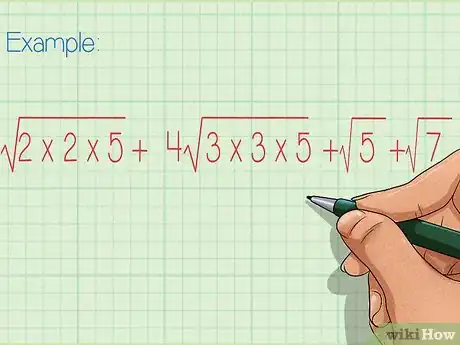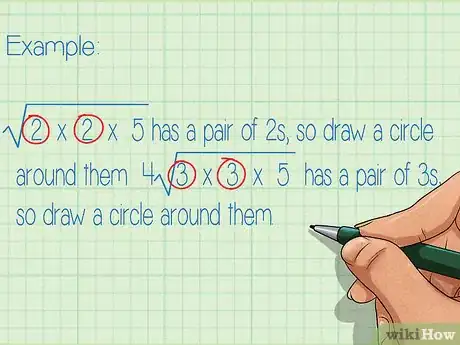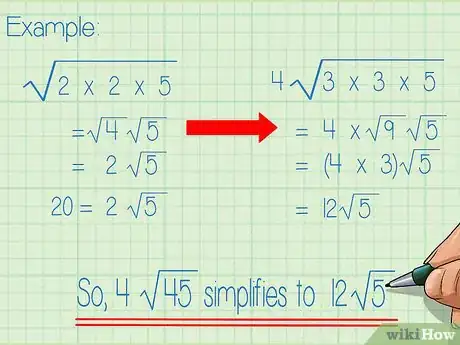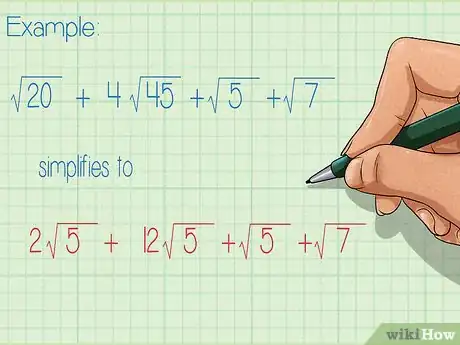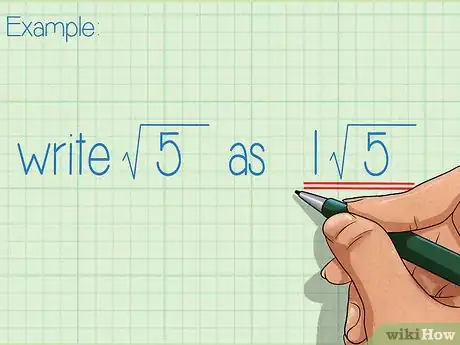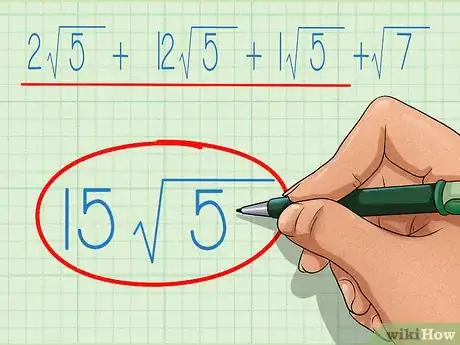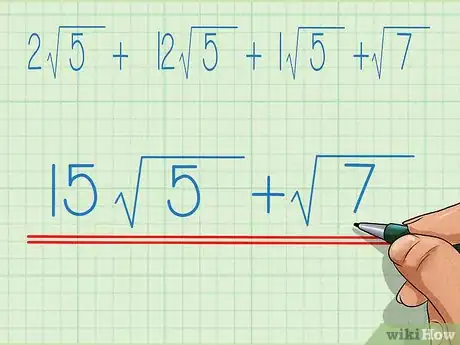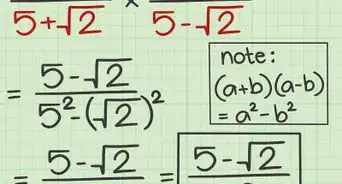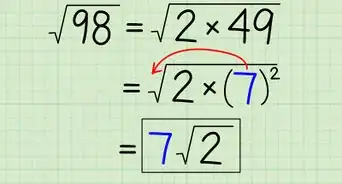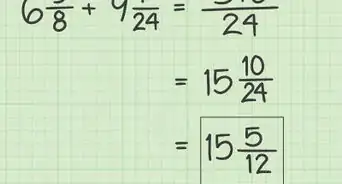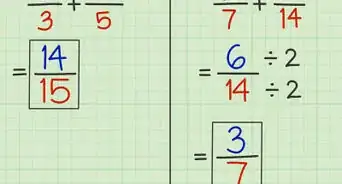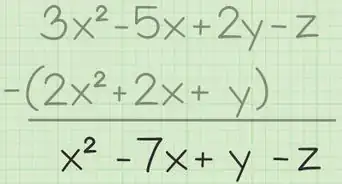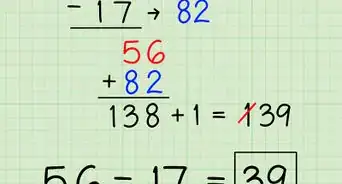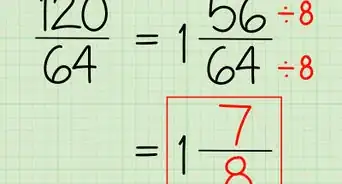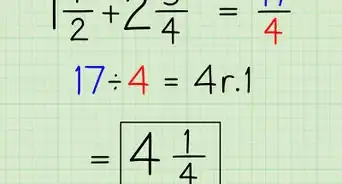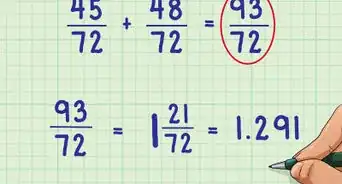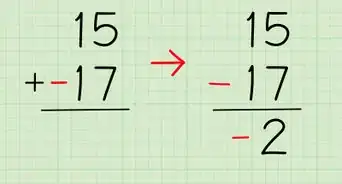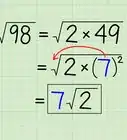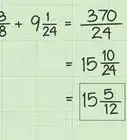This article was co-authored by wikiHow Staff. Our trained team of editors and researchers validate articles for accuracy and comprehensiveness. wikiHow's Content Management Team carefully monitors the work from our editorial staff to ensure that each article is backed by trusted research and meets our high quality standards.
This article has been viewed 49,939 times.
Learn more...
You can perform all the usual mathematical operations on square roots, including addition, subtraction, division and multiplication. But because the radical sign over the square root represents a mathematical operation already in place, the rules for adding square roots are a little different than the rules you may be used to with integers. To add square roots, you must first understand how to simplify them.
Steps
Simplifying Square Roots
-
1Factor each radicand into prime numbers.[1] An easy way to factor a number is by creating a factor tree diagram. Read Do a Factor Tree for complete instructions.
- A radicand is the number under the radical sign.
- A prime number is a number that can only be divided evenly by 1 and itself,[2] for example, 2, 3, 5, 7, 11, etc.
- You do NOT need to factor any coefficients. A coefficient is a number in front of the radical sign.
- Let’s say, for example, that you want to add
To do this, you need to factor as . You also need to factor as . - If a radicand is already a prime number, it does not need to be factored. For example, since and are already prime numbers, and do not need to be factored.
-
2Rewrite the expression. Keep all the factors under the radical sign.
- For example, after factoring the radicands, the example expression would be
Advertisement -
3Circle pairs of like factors under each radical. Since you are finding a square root, by pairing up like factors, you can easily simplify the expression.
- For example, has a pair of 2s, so draw a circle around them. has a pair of 3s, so draw a circle around them.
-
4Factor out coefficients by identifying paired factors under each radical. The square root of any pair of factors will equal the factor, because and . Place this number in front of the radical sign. If the expression already has a coefficient, multiply the two numbers.[3]
- For example:
So, simplifies to . -
So, simplifies to .
- For example:
-
5Rewrite your problem, using the simplified terms. This will make the adding process much easier.[4]
- For example:
simplifies to
- For example:
Adding Square Roots
-
1Place a 1 in front of any square root that doesn’t already have a coefficient. The 1 is always understood, and so is rarely written. However, when adding, writing the 1 can help you keep track of coefficients.
- A coefficient is the number in front of the radical sign.
- For example, write as .
-
2Check for square roots with the same radicand. You can only add square roots that have the same radicand.[5]
- The radicand is the number underneath the radical sign.
- For example, you can add the first three terms in the expression
, because they all have the same radicand (5).
-
3Add the coefficients. Only add the coefficients for terms that have the same radicand. Do NOT add the radicands.[6]
- For example, .
-
4Add any unlike radicands to the expression. These cannot be simplified any further, and cannot be added to any other terms. The result will be your final, simplified answer.[7]
- For example, .
Community Q&A
-
QuestionHow do I add the square root of 5 and 212?
 DonaganTop Answerer√5 + 212 = 2.236 + 212 = 214.236.
DonaganTop Answerer√5 + 212 = 2.236 + 212 = 214.236. -
QuestionHow would I add two radicals that are prime numbers?
 DonaganTop AnswererAll you can do is evaluate each radical individually and then add them together.
DonaganTop AnswererAll you can do is evaluate each radical individually and then add them together.
References
- ↑ https://www.mathsisfun.com/numbers/simplify-square-roots.html
- ↑ http://mathworld.wolfram.com/PrimeNumber.html
- ↑ https://www.mathsisfun.com/numbers/simplify-square-roots.html
- ↑ https://www.khanacademy.org/math/algebra/x2f8bb11595b61c86:rational-exponents-radicals/x2f8bb11595b61c86:simplifying-square-roots/a/simplifying-square-roots-review
- ↑ https://math.libretexts.org/Bookshelves/Algebra/Book%3A_Elementary_Algebra_(OpenStax)/09%3A_Roots_and_Radicals/9.03%3A_Add_and_Subtract_Square_Roots
- ↑ https://math.libretexts.org/Bookshelves/Algebra/Book%3A_Elementary_Algebra_(OpenStax)/09%3A_Roots_and_Radicals/9.03%3A_Add_and_Subtract_Square_Roots
- ↑ https://math.libretexts.org/Bookshelves/Algebra/Book%3A_Elementary_Algebra_(OpenStax)/09%3A_Roots_and_Radicals/9.03%3A_Add_and_Subtract_Square_Roots
About This Article
To add square roots, start by simplifying all of the square roots that you're adding together. Then, place a 1 in front of any square root that doesn't have a coefficient, which is the number that's in front of the radical sign. Then, add the coefficients of all the square roots that have the same radicand, which is the number under the radical sign. Finally, add any unlike radicands to the end of the expression. To learn how to simplify square roots, keep reading!










